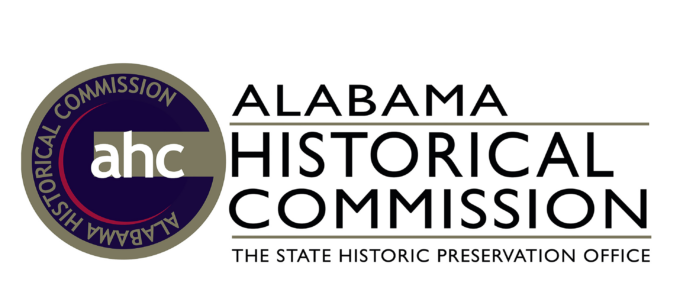MONTGOMERY, Ala. – After years of intensive planning and behind-the-scenes work, the Alabama Historical Commission (AHC) is proud to announce a new digital public resource – Historic Preservation Map Initiative. The AHC has been diligently working to convert the agency’s paper files associated with Alabama’s historic architectural resources into a web-based system utilizing geographic information systems (GIS) technology to increase the information’s accessibility to the public and to ensure their long-term preservation. This GIS database will be the first time that any researcher will be able to review the files of the AHC without making an appointment to search through the hard copy files of the Historic Preservation Division. This map will also enable the general public to review information about historic structures and places in their own community. To date, more than 129,000 documents have been scanned including survey forms, photographs, booklets, and maps. Go to https://ahc.alabama.gov/historicpreservationmap.aspx to begin exploring the interactive map.
“The Alabama Historical Commission is incredibly proud of the vision and effort behind the Historic Preservation Map,” said Lisa D. Jones, executive director Alabama Historical Commission. “Thanks to the work of our staff and interns, and through the support of the Alabama Bicentennial Commission, this important resource is available for all Alabamians to utilize.”
“After my personal testing of the newly launched GIS database of Historic Architectural Resources, I highly recommend it to the general public as well as professionals working in the area of preservation. It can also serve as a resource for developing local courses of study for our schools. As an easily accessible public record of Alabama historic resources, it also includes documentation of properties receiving state and federal tax credits, cemeteries, Native American sites and historic African-American schools,” said Eddie Griffith, Alabama Historical Commission chairman. “This continuing effort will eventually expand to all of Alabama’s counties and future documentation of historic resources will be added.”
The Alabama State Legislature established the AHC in 1966 to foster the understanding and preservation of Alabama’s heritage. In fulfilling its mission, the AHC has collected valuable information on Alabama’s man-made environment including historic houses, churches, schools, bridges, cemeteries, commercial buildings, farms, etc. These architectural survey files include paper survey forms; photographs (i.e. prints, contact sheets, slides and negatives); maps; measured drawings; blueprints; and accompanying materials. While great strides have been made to maintain and organize these paper files, they have only been accessible by visiting the AHC’s main office. Before the digitization process began, there was no way to replace a file if it was lost or damaged.
Easily accessible historic property locations within a Geographic Information System (GIS) is an invaluable tool for planners at the municipal, county, state and federal level; cultural resource managers; preservation professionals; the general public; and federal agencies for compliance with Section 106 of the National Historic Preservation Act 1966, as amended. The present project consists of digitizing and constructing a geographic information systems (GIS) database for AHC Architectural Survey Files. GIS is a framework for gathering, managing, and analyzing data that is rooted in the science of geography. With the Historic Preservation Map Initiative, the AHC now has an available geo-database to display spatially the many thousands of historic resources across Alabama. The Historic Preservation Map Initiative serves as a “master map” that will enable the public to explore these resources virtually and understand why these resources are culturally important to Alabama.
“The Alabama Historical Commission’s Historic Preservation Map Initiative is the outcome of vision, organization, and dedication resulting in what can best be described as a treasure map,” said Jay Lamar, executive director, Alabama Bicentennial Commission. “In mapping the historic sites and properties throughout the state, it reveals what we know: Alabama history is dense, rich, multifaceted, and many layered. It is hard to imagine a more important and valuable resource now or for the future, nor one more apt on the heels of the commemoration of our first two hundred years.”
The Historic Preservation Map Initiative includes maps for all of the Alabama Historical Commission’s many historic preservation programs. The resulting map displays layers of programs including Alabama Register of Landmarks & Heritage; Black Heritage Council Markers; Historic African American Schools; The National Register of Historic Places; Preservation Easements; Alabama Historic Rehabilitation Tax Credit Program; AHC County Surveys; Alabama Historic Cemetery Register; Places in Peril; and AHC Historical Markers.
Student interns have been working steadily since October 2017 to scan the AHC’s collection of architectural survey files, which represents thousands of forms and photographs of historic buildings all over Alabama. The locations of these historic places are being plotted in the GIS database. 42 counties have been plotted so far. More than 40,000 points have been mapped in the Survey layer alone.
The attribute tables within each layer include all information that the AHC has regarding each site. Additionally, attachments are available in most cases that provide a downloadable PDF of the original submitted documentation.
The Historic Preservation Map can be viewed on a desktop computer or mobile device such as a smart phone. On a smart phone with GPS-enabled, a viewer can select to have their current location notated on the map to immediately see if there are recorded resource in the nearby vicinity. Alternatively, viewers can search by address/city/county or even latitude/longitude. From a single map, researchers will be able to switch between various background maps – the map defaults to an Environmental Systems Research Institute (ESRI) Street Map; however, that can be changed to view topographic maps or recent aerial photographs. Any clickable data point offers a wealth of information including scanned forms and photographs for each feature.
While every effort has been taken to ensure the accuracy of the data, the map and documentation will be an ongoing effort as new information is made available; this database will always be a work in progress. The Alabama Historical Commission continually receives a wealth of new data from professional historians, archaeologists, and architectural historians from all over the state. As the information becomes available, the map will be updated making the new data instantly available to the public. AHC’s Historic Preservation Initiative Map is intended to function as a research tool rather than an up-to-the-minute inventory of all historic and/or architecturally significant resources in the state.
“Many states have online information and many more are working towards it; however, the amount of information that is available varies widely. Alabama will be one of only a handful of states that makes this information available to the public without a subscription fee,” said Eric Sipes, assistant state archaeologist.
For more information about an historic property, contact Hannah Garmon at 334-230-2644 or Hannah.Garmon@ahc.alabama.gov. For more information about the Historic Preservation Map Initiative, contact Eric Sipes at 334-230-2667 or Eric.Sipes@ahc.alabama.gov.






















